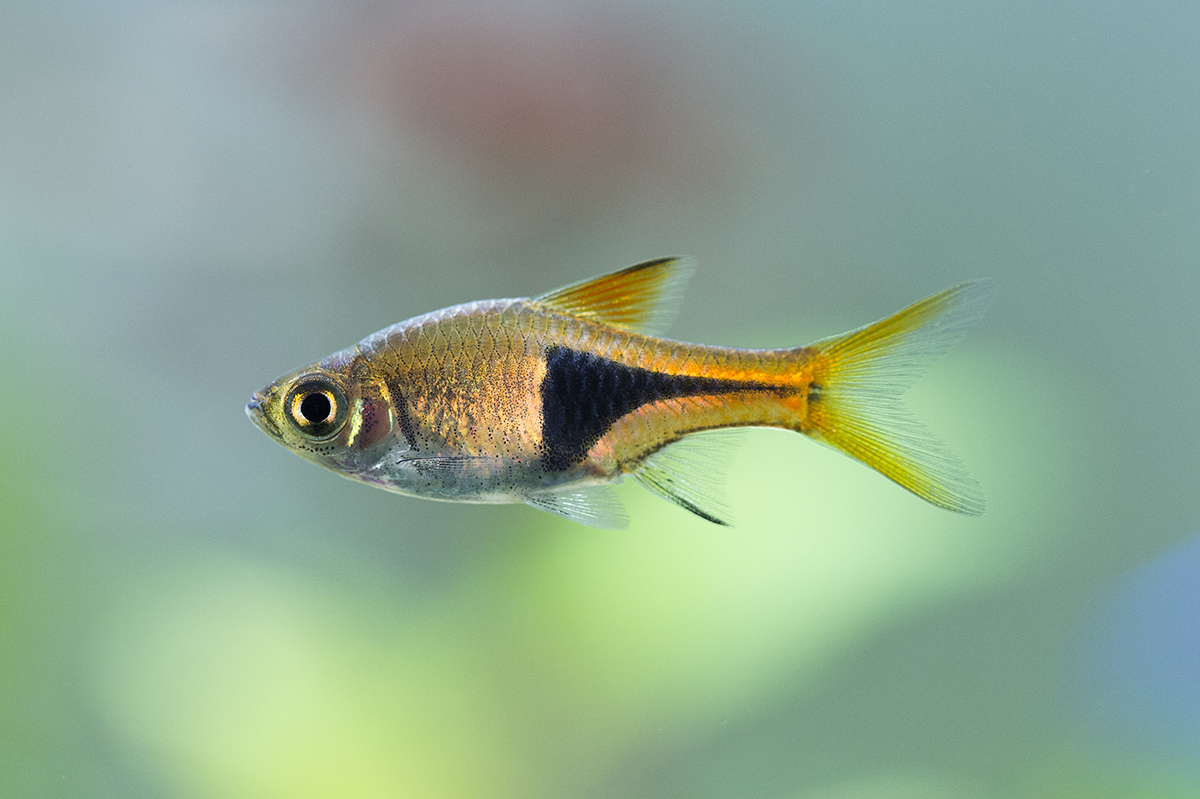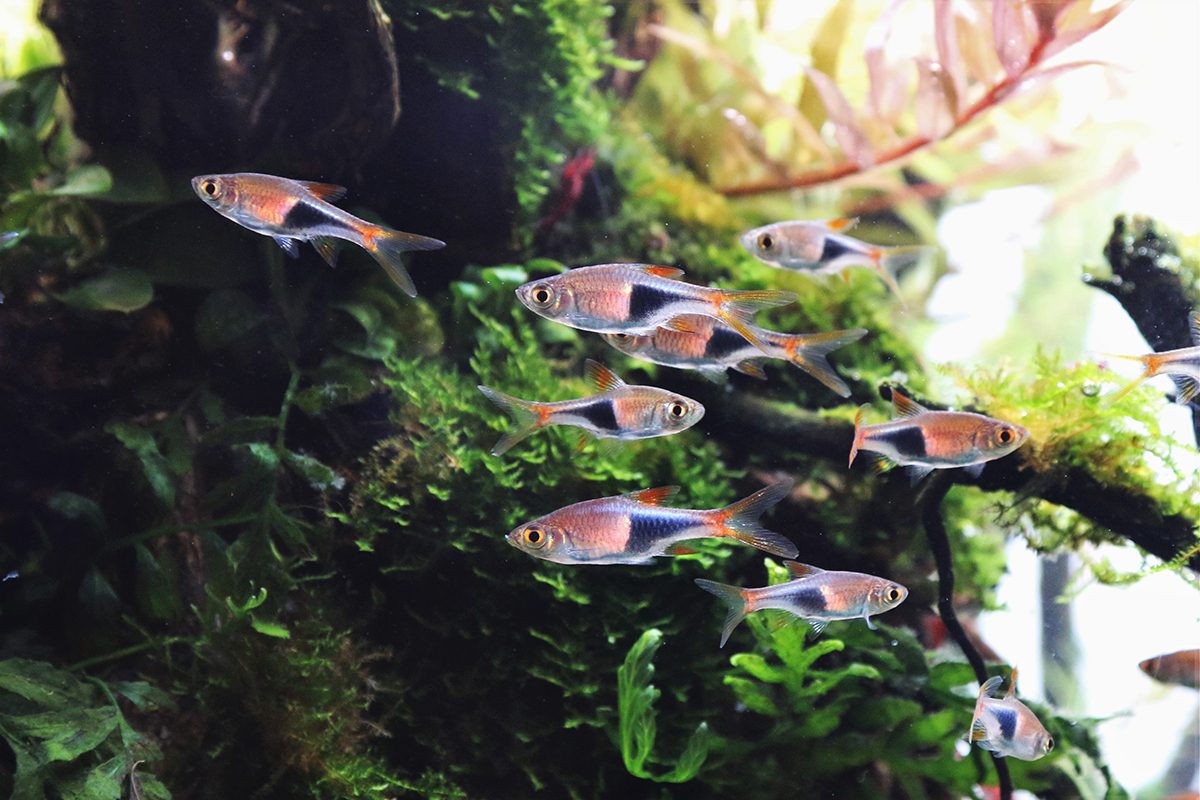The harlequin rasbora at a glance:
| Fish size | 4 to 5 cm |
| Tank size | From 54 l |
| Temperature | 22°C – 26°C |
| pH level | 5.0 – 7.0 |
| Compatible with | Labyrinth fish, loaches, other danios |
| Tank region | Middle |
| Food | Eats all smaller food types, particularly likes black bloodworms |
The harlequin rasbora belongs to the carp family (cyprinidae), and within this to the danios (danionidae). Its scientific name is trigonostigma heteromorpha (until 1999 it was known as rasbora heteromorpha). “Heteromorpha” comes from the fact that its shape differs slightly from that of other danios, with a deeper body.
The harlequin rasbora is sociable, an active swimmer and one of the most popular aquarium fishes. It originally comes from Malaysia, Indonesia, Sumatra and Thailand, where it can be found in large shoals in black-water swamps and streams. It was discovered in 1904 and the first wild fish were imported to Europe in 1906.
It is easily recognisable thanks to the black triangular patch that starts below its dorsal fin and extends to its tail fin. Its silver scales also give off a reddish to copper sheen. The shimmering colours of its relatively large scales earned it the name “harlequin rasbora”.
The males tend to be a little slimmer than the females. Their triangular patches also differ. While the patch ends at the root of the tail fin in females, it continues through to the middle of the tail fin in males.
Harlequin rasbora: Aquarium and water
To create an appropriate habitat, these peaceful shoal fish should be kept in an aquarium of at least 54 litres. In accordance with its natural habitat, the harlequin rasbora feels most at home in black water. The best way to give the water a dark, slightly acidic quality is to filter it over peat or add peat extracts. Wild harlequin rasboras live in very soft water of below 3 °dH. However, bred harlequin rasboras now cope very well in neutral or even slightly hard water.

Harlequin rasbora: Keeping conditions
In the wild, harlequin rasboras form loose social groups – to ensure that they feel safe and show their entire range of behaviour, they must be kept in groups of at least eight to ten fish. The group also brings out the colour of their dark triangular patch against its silvery background. If the fish are happy, they can live for up to six years.
Their peaceful nature means that harlequin rasboras can be easily kept with other fish; the best options include labyrinth fish, loaches and other danios.
Harlequin rasbora: Planting and decoration
Trigonostigma heteromorpha likes a dark aquarium with a smattering of vegetation. It needs both places to hide and open spaces to swim. Its colours look best in muted light (achieved, for example, with a covering of floating plants) with a dark substrate.
If you wish to breed these freshwater fish, you will need to take their reproduction strategy into account when choosing plants: they generally lay their eggs on the underside of broadleaf plants. Suitable plants include cryptocoryne and swampweeds (hygrophila). If planning to breed fish, you will also need to think about water hardness, which must be very low. The pH level must be slightly acidic. Therefore, these are not easy fish for beginners to breed.
Harlequin rasbora: Diet
These fish will eat almost any form of dry food. You can make them particularly happy by regularly feeding them live food. They particularly like black bloodworms.

